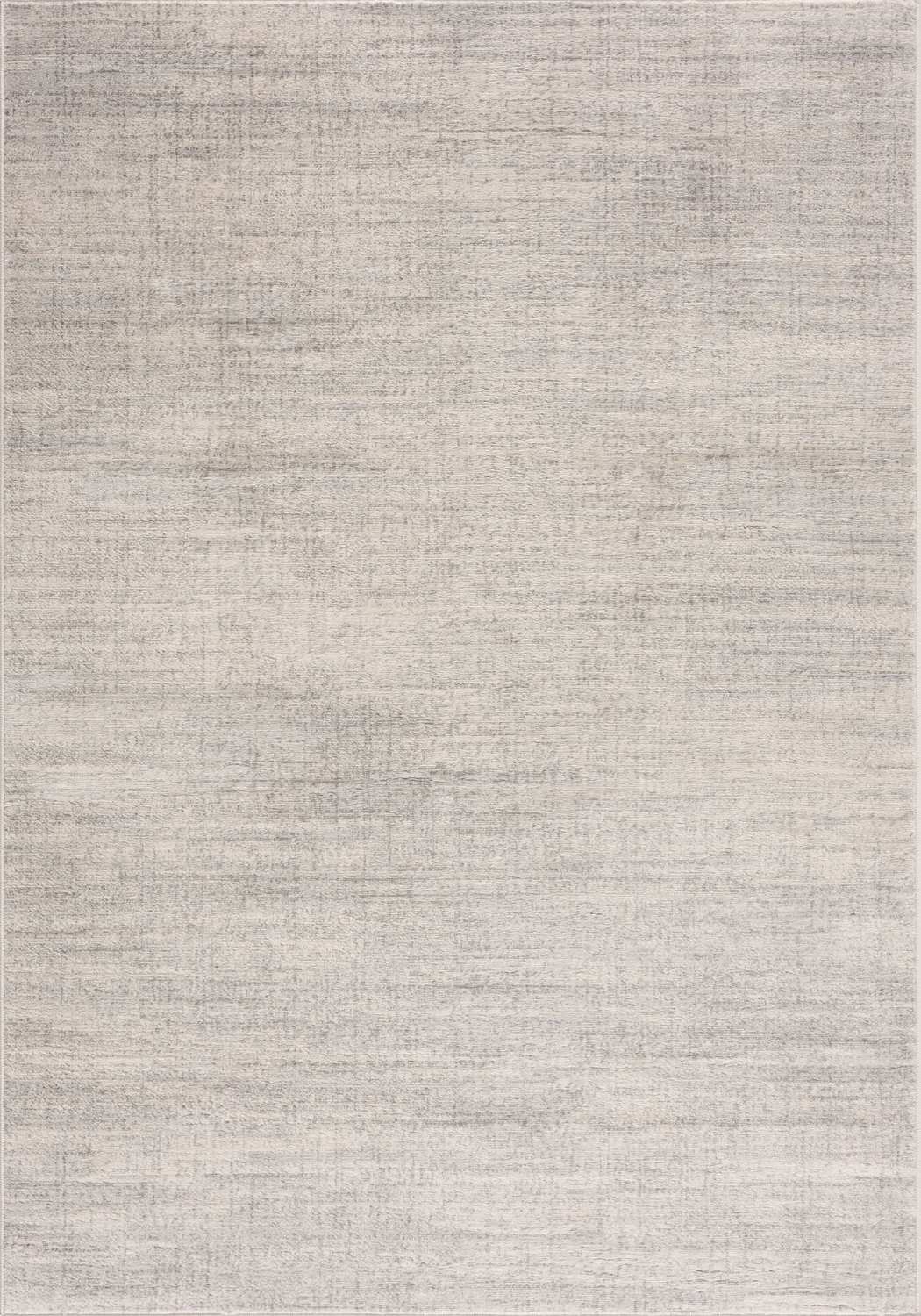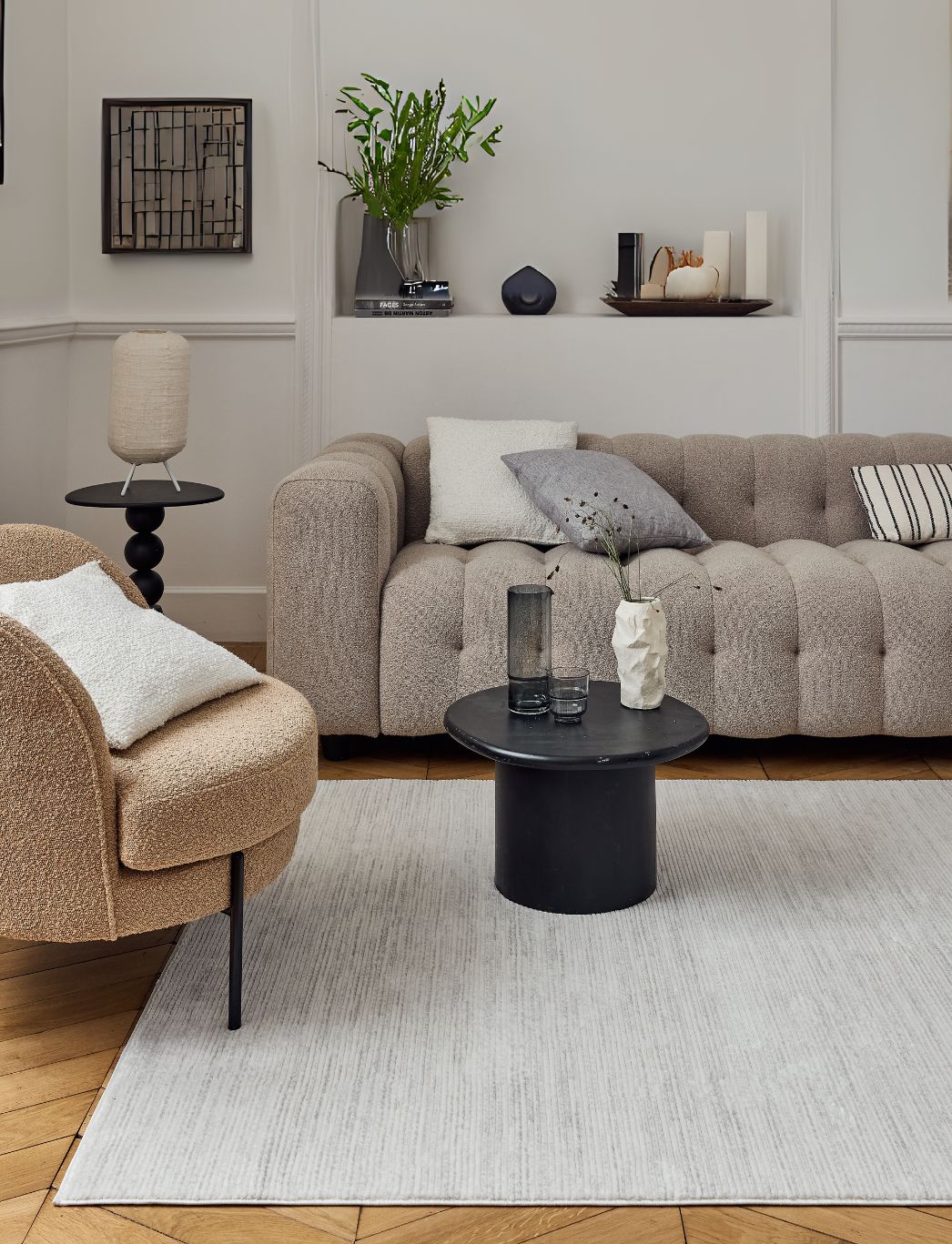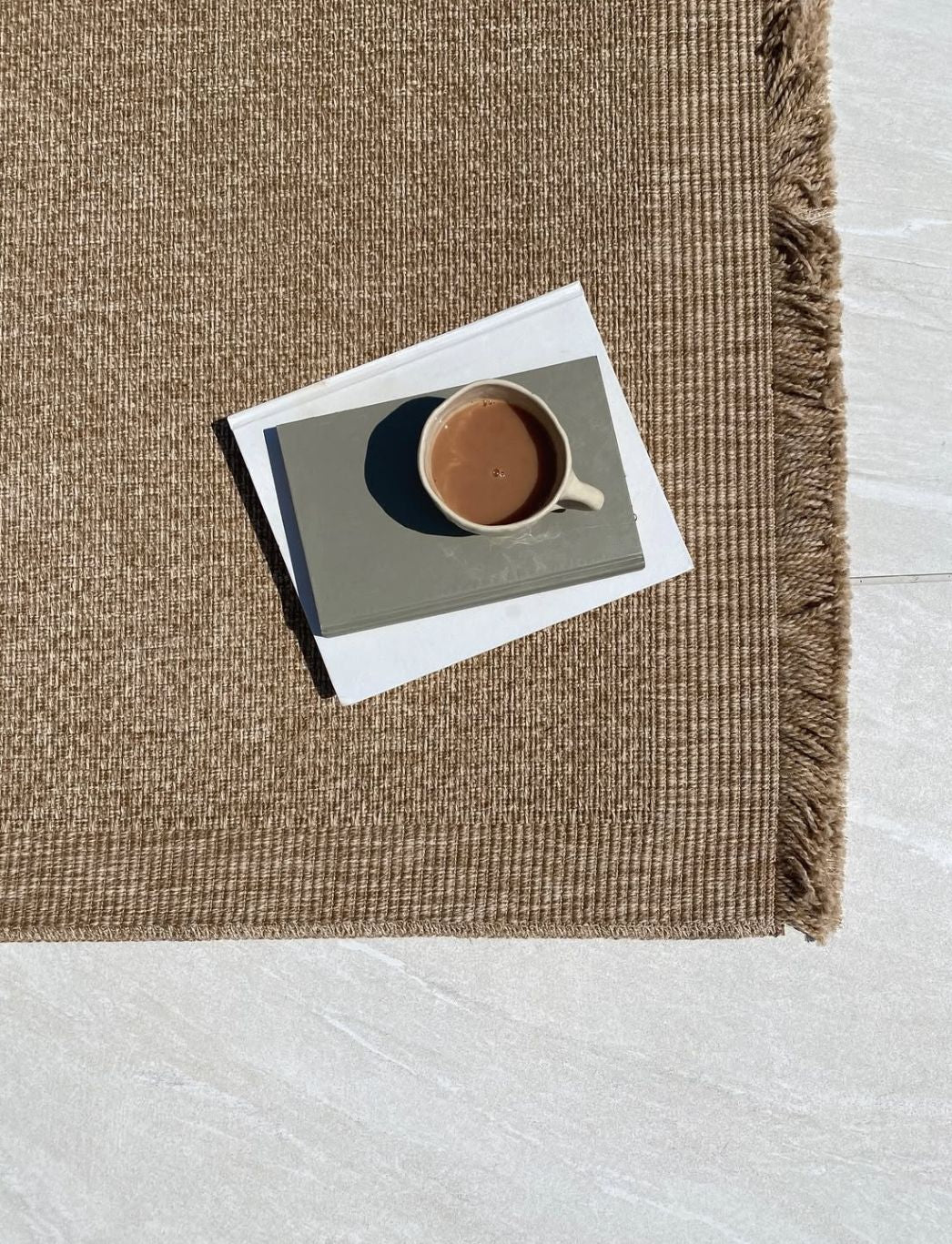How to Get Smells Out of a Rug: Expert Methods That Actually Work
Here's a surprising fact from the EPA: air pollutants inside your home can be 2 to 5 times higher than outdoor levels. This makes getting smells out of your rug especially important.

A smelly rug does more than create an unpleasant atmosphere; it adds to your indoor air quality issues. Your rug might smell musty after cleaning or pick up stubborn odours. The good news? Natural solutions can help. Baking soda stands out as a powerful odour absorber that can make your carpet smell fresh naturally. NASA research shows another interesting solution: indoor plants not only give us oxygen but also remove chemical toxins from the air.
This piece will show you proven ways to handle tough rug odours. You'll learn everything from simple household fixes to professional techniques. Let's take a closer look at solutions that really work!
Baking Soda: The Natural Deodoriser

Baking soda is a natural powerhouse to tackle unpleasant rug odours. This simple household item doesn't just mask smells - it absorbs moisture and neutralises them at their source. The science behind it is simple: baking soda particles go deep into carpet fibres and neutralise smelly compounds right where they start.
You won't find a better alternative than baking soda (sodium bicarbonate). It's affordable, non-toxic and safe around kids and pets. The powder works great on oil and grease stains that often leave lasting smells in rugs and carpets.
How to apply it effectively
Getting the best results takes more than just throwing some powder on your rug. Here's the quickest way to make it work:
Prepare the area - Clear out furniture from the rug so you can treat the whole surface. This step lets baking soda reach every part of your rug.
Clean thoroughly - Run your vacuum over the rug to get rid of dirt, pet hair, and debris. This prep work lets baking soda touch the fibres where bad smells hide.
Apply generously - Cover the entire rug with baking soda.
Work it in - Deep-pile rugs need extra attention. Use your fingers or a soft brush to work the powder into the fibres. This helps it reach deeper where odours start.
Wait patiently - Let the baking soda sit for at least 15 minutes. During this time, it pulls in oils, moisture, and anything that causes bad smells.
Vacuum thoroughly - Get all the baking soda out with your vacuum. Make several passes to remove it completely. Grey powder in your vacuum means it trapped dirt and odours successfully.
This method is really clever because any leftover powder in your vacuum bag or canister keeps working to freshen things up inside the vacuum too.
When to leave it overnight
A quick 15-minute treatment works fine for basic freshening, but some situations need more time. Here's when you should let baking soda sit overnight:
Persistent odours - Tough smells like cigarette smoke, cooking odours, or musty scents need more time. The longer baking soda stays on your rug, the more it can absorb.
Pet accidents - Pet urine odours are tricky. Overnight treatment lets baking soda neutralise those acidic compounds that make things smell bad. It works substantially better than a quick application.
Deeply embedded smells - Old odours or humidity exposure need extra time. Overnight treatment lets the powder work through all rug layers.
After cleaning - Musty smells after cleaning? Baking soda left overnight helps soak up extra moisture and gets rid of that damp smell.
The overnight method works best when you apply baking soda before bed and vacuum it up the next morning. Some odours might need a second round since baking soda can only absorb so much at once.
Note that baking soda is safe for most rugs, but it's smart to test it on a hidden spot first, especially with antique or delicate rugs.
White Vinegar: The Odour Neutraliser

White vinegar is one of the most powerful natural odour neutralisers for rugs and carpets, yet people often overlook it as a cleaning solution. Its acidic properties break down stubborn odours instead of just masking them. White vinegar works as a natural disinfectant and deodoriser that can handle everything from pet accidents to musty mildew smells.
People often worry about using vinegar because of its strong smell at first. The good news is that once it dries, the vinegar smell goes away completely and takes the unwanted odours with it. This common kitchen item works great on most synthetic rugs and can safely clean many natural fibre rugs when properly diluted.
Mixing vinegar with water

The right vinegar solution is vital to remove odours without damaging your rugs. Here's how to mix it properly:
For standard odour treatment: Mix equal parts white vinegar and water in a clean spray bottle. This balanced mix works well for most routine odour issues and daily freshening.
For persistent odours and mildew: A stronger mix using 1 part vinegar to 2 parts warm water works better to tackle mildew smells deep in the rug fibres.
For synthetic carpets: Mix one cup of white vinegar with two cups of water. This solution is gentle enough for synthetic materials but still removes odours effectively.
For natural fibre rugs: Natural fibres need more care. Mix ¼ cup of white vinegar with ¼ cup of water to create a gentler solution that protects delicate fibres. Be extra careful with wool rugs by adding more water to dilute the vinegar further.
Enhancement option: You can add several drops of your favourite essential oil to the vinegar solution for a nice scent after cleaning. Another option is to combine vinegar with baking soda for stronger deodorising power.
White vinegar works best because apple cider vinegar might leave residue or stain light-coloured carpets.
How to use it without soaking the rug
You'll get the best results by applying vinegar properly to target odours without saturating the rug.
Prepare and test first: Start with a patch test in a hidden area. Put a small amount of your vinegar solution to check if it affects the rug's colour or texture.
Apply correctly: Use the spray bottle on "mist" setting and lightly spray the affected area. The golden rule is to moisten the fibres but never soak them. Too much moisture can lead to mould and mildew growth, creating new odour issues.
Allow proper dwelling time: Let the solution sit for 10-15 minutes. Tough odours need 15-20 minutes. This gives vinegar time to neutralise smells at their source.
Blot, don't rub: After waiting, blot the area with a clean, dry cloth or towel. Press gently to soak up moisture instead of rubbing, which can harm fibres and spread stains. Larger areas need several clean towels.
Allow thorough drying: Make sure the rug dries completely. You can speed up drying by using fans or opening windows. The offensive odours will disappear as the vinegar dries.
Stubborn odours like pet urine or mildew might need multiple treatments. All the same, vinegar is an affordable, non-toxic solution that neutralises even the toughest rug smells without harsh chemicals.
Vodka: A Surprising Bacteria Buster

Your drinks cabinet might hold the solution to those stubborn rug odours. Vodka isn't just for cocktails - it's a really effective carpet deodoriser that tackles smells other methods can't eliminate. This clear spirit works great if you don't like vinegar's smell but still want natural cleaning options.
The magic happens because of vodka's high alcohol content—typically 40% alcohol by volume, and 100-proof (50% ABV) varieties pack even more cleaning power. Unlike chemical-filled commercial deodorisers, vodka gives you a simple way to eliminate carpet odours without harmful substances in your home.
Why it works on mould and mildew

Vodka cleans so well because it has antifungal and antibacterial properties. The alcohol kills bacteria and mould spores right away instead of just hiding bad smells. This makes it perfect for two main odour problems:
Bacterial growth - Bacteria in your rug fibres create waste that smells bad. Vodka breaks down bacterial cell membranes and kills these microorganisms to eliminate the smell's source.
Mould and mildew - Vodka works great on musty odours that develop in stored or damp rugs. The alcohol kills mould spores and stops them from growing back, which fixes current smells and prevents future problems.
Vodka gives you a safer option than traditional cleaning products with fumes. It fights mould as well as bleach-based cleaners without harsh chemicals. Many professional cleaners now suggest vodka instead of regular mould treatments.
You'll also love that vodka leaves no residue after it evaporates—unlike many commercial products that leave sticky films that attract more dirt.
How to apply and blot
The right application method will give a maximum odour-fighting effect without damaging your rug. Here's what you need to do:
Select the right vodka - Plain, unflavoured vodka works best. Skip flavoured varieties with sugars or additives that could leave sticky residue.
Prepare your solution - Mix equal parts vodka and water in a clean spray bottle. Tough smells need a stronger 2:1 ratio of vodka to water. Maybe even use undiluted vodka for the worst cases.
Test in an inconspicuous area - Try your solution on a small hidden section first to check it won't affect colour or texture.
Apply properly - Spray the affected area lightly. The rug should be damp but not soaked, as too much moisture can damage backing materials.
Allow proper dwell time - Let it sit for 15 minutes so the alcohol can kill odour-causing organisms. Stubborn mould or mildew might need 20-30 minutes.
Blot thoroughly - Press a clean white cloth or paper towels firmly on the treated area after waiting. Don't rub - it can damage fibres and spread stains.
Allow to dry completely. Good ventilation helps the rug dry well. Fans speed up drying, especially with thicker rugs.
A light sprinkle of baking soda after the dried vodka treatment might help with really stubborn smells. These two methods work together to attack odours in different ways for better results.
The Onion Hack: Absorbing Musty Smells

You might find this strange, but onions are nature's secret weapon against musty rug odours. Most people see them as just kitchen ingredients, but onions are amazing natural odour absorbers that work great on those tough basement and storage smells in rugs. The onions absorb excess moisture from the air and take unpleasant odours with them.
This natural solution works better than chemical deodorisers because onions have compounds that attract and trap ambient odours. They work perfectly to remove musty smells from rugs that sat in storage or got exposed to dampness.
How to use onions safely

The onion hack needs careful attention to detail.
Select and prepare the onion. Choose large onions and slice them in half through the middle.
Set up properly - Place the halved onions in small bowls with a little water. Water helps onions keep their absorbing power longer.
Position strategically - Put these bowls around your smelly rug. Large rugs need multiple bowls placed around them.
Safety precautions - Keep these bowls away from children and pets. Onions can harm pets or small children if they eat them.
Allow sufficient time - Let the onions sit overnight. They absorb more odour the longer they stay.
Check and replace - Look at the onions next morning. They should have soaked up the musty smell. Stubborn odours might need fresh onions for several days.
The onion's own smell fades as it absorbs the surrounding odours.
Best rooms and conditions for this method

This hack works best in certain situations:
Basement areas - The technique shines in underground spaces where that typical basement smell spreads through everything, including rugs. Onions help curb dampness that creates these odours.
Storage spaces - Stored rugs often smell stale and musty. Onions do great work in closed storage areas with concentrated odours.
After water exposure, Onions can pull out damp smells from rugs after cleaning or moisture exposure.
Closed rooms - Enclosed spaces let onions concentrate their odour-absorbing power.
Ventilation considerations - Open your windows after removing the onions. Fresh air completes the deodorising process.
The onion hack is a passive solution - you just set it up and let nature do its thing. Really tough smells might need a combination approach. Try following up with baking soda after the onions have done their work.
Essential Oils: Add Freshness Naturally
Essential oils are a great way to get pleasant scents into your rug while fighting odours naturally. These oils do more than mask smells - their antibacterial properties help curb the microorganisms that cause bad odours. This two-pronged approach makes them great additions to your rug cleaning toolkit.
Best oils for rugs
The right essential oil can make a huge difference in both cleaning power and fragrance.
Lavender is one of the most versatile options. It creates a calming atmosphere and fights various bacteria, including Streptococcus. Your home with kids and pets will stay safe with lavender.
Citrus oils (lemon, lime, orange) cut through grease well and leave a clean, uplifting scent. They evaporate fast, which makes them perfect for quick freshening. You can create a refreshing summer blend with 10 drops each of lime, lemon, and orange oils.
Mint varieties like spearmint and peppermint work great as deodorisers and help ease headaches. Just be careful - too much mint can cause irritation.
Eucalyptus packs strong cleaning power and can help with breathing issues - ideal if you have allergies.
Other great choices include geranium (floral scent that helps you relax), rosemary (fresh and invigorating), cinnamon (warm scent that fights bacteria), and tea tree (strong antimicrobial effects).
How to mix with baking soda or vinegar

Your deodorising efforts get better when you combine essential oils with other natural cleaners:
With Baking Soda:
- Measure one cup of baking soda into a bowl
- Add 20-30 drops of your chosen essential oil (less for strong oils like peppermint)
- Mix well and break up any lumps
- Keep in an airtight container until needed
- Sprinkle lots on your rug, wait several hours or overnight, then vacuum well
These blends work great for specific problems:
- Musty Rugs: 20 drops Siberian fir with 10 drops juniper berry
- Pet Odours: 15 drops lavender with 5 drops rosemary
- Food Smells: Equal parts orange, lemon, and cinnamon oils
With Vinegar: Mix equal parts warm water and distilled white vinegar in a spray bottle, then add 20-30 drops of essential oil. The vinegar tackles odours while essential oils leave a nice scent after the vinegar smell fades.
Note that essential oil scents usually fade within a day or two, but their deodorising effects last longer. You might need to reapply if smells persist.
Essential oils give you an effective, non-toxic way to freshen your rugs without harsh chemicals in your home.
Sunlight and Air: Nature’s Deodoriser
Nature's elements provide a chemical-free way to eliminate rug odours. Sunlight and fresh air work together as nature's own deodorising system that breaks down odour molecules naturally. UV rays eliminate bacteria causing persistent smells, making this method cost-free and effective.
How to air out rugs safely
Your smelly rug needs more care than just putting it outside.
Choose the right day - A dry, breezy day with low humidity works best. High moisture levels in the air will work against your deodorising efforts.
Prepare the rug - A good vacuum before taking your rug outdoors removes loose dirt and debris.
Select an appropriate location - Your rug needs to hang over a sturdy clothesline, porch railing, or clean fence. Smaller rugs can be draped over multiple chairs. Direct contact with grass or concrete should be avoided as it might add new smells or moisture.
Position correctly - Air circulation around both sides of the rug is essential, so flip it halfway through.
Beat thoroughly - A gentle beating with a broom handle or carpet beater dislodges deep-set particles that trap odours.
Time it right - Weather conditions and smell intensity determine how long to leave the rug outside, usually 2-4 hours.
Avoiding colour fading from UV
Sunlight kills odour-causing bacteria but can cause fading and damage.
Limit direct exposure - Deodorising needs just 2-4 hours of sunlight without risking major colour damage.
Position strategically - Antique or vibrant rugs do better in dappled shade or morning sunlight when UV rays are less intense.
Rotate regularly - The rug needs turning every 30-60 minutes for even exposure and to prevent patchy fading.
Monitor continuously - Your rug's condition needs regular checks for colour bleeding or fading, especially vintage or bright-coloured ones.
Consider UV protection - Textile-specific spray-on UV protectants help shield valuable rugs from harmful rays.
Of course, this natural method works best as part of regular maintenance. Your rugs need airing out every three months to stop musty odours from developing.
When to Call a Professional Cleaner

Your best home remedies might not always get rid of stubborn rug odours. Regular hoovering up and DIY cleaning methods help, but statistics show only 3% of households get their carpets professionally cleaned annually. Knowing the right time to call experts can save your rug and your peace of mind.
Signs your rug needs expert help
Beyond visible stains, several signs show you need professional help:
Persistent odours stick around after multiple cleaning attempts, especially when you have pet urine problems that simple carpet cleaning can't fix. Standard cleaning machines fail to remove all odour from fibres and backing, making pet stains particularly tricky.
Visible wear and tear like frayed edges, loose threads, or patchy areas point to deep-seated dirt damaging the fibres. Sharp-edged particles embedded over time can shred fibres and cause baldness.
Increased allergies signal your rug's collection of dust mites, pollen, or pet dander. Your rug might affect indoor air quality if you notice more sneezing, coughing, or watery eyes.
Dust released into the air during walks across your rug shows deeply trapped particles that normal hoovering can't reach.
Rough or greasy texture points to leftover residue from previous cleaning attempts or built-up oils that need expert extraction.
What to expect from professional services

Professional cleaning gives many benefits beyond DIY methods. Expert cleaners first check your rug's condition and materials topick the right cleaning solutions.
Heavily soiled rugs go through a multi-stage process including:
- Pre-cleaning assessment
- Specialised equipment for deep extraction
- Targeted treatments for stubborn stains
- Sanitising and deodorising treatments
- Proper drying techniques
Service costs range from £3.18 to £9.53 per square foot based on material. The cleaning takes about two hours with up to 24 hours drying time.
Most households need annual cleaning, but homes with pets, children, or allergy sufferers benefit from twice-yearly treatments.
Professional cleaning extends your rug's life and improves indoor air quality. Many services offer stain protection treatments that help defend against future spills.
Conclusion
Fresh, odour-free rugs play a significant role in creating a healthy home environment. We've explored many effective ways to get rid of unwanted smells from your rugs. Baking soda is a versatile, non-toxic solution that works well for common odours. White vinegar has powerful neutralising properties that tackle even the most stubborn smells. Vodka surprisingly works as an excellent antibacterial agent against mould and mildew problems.
Natural solutions work remarkably well, too. The onion hack absorbs musty smells from storage or basement spaces effectively. Essential oils not only add pleasant fragrances but also fight odour-causing bacteria. Sunlight and fresh air are simple yet overlooked tools that can freshen up your rugs.
These home remedies work well for most rug odours when you apply them correctly. Multiple failed cleaning attempts might mean you need professional help. Professional cleaners have specialised equipment and techniques to reach deep into fibres where household methods can't.
You can prevent most odour issues with regular maintenance before they become serious. A routine of vacuuming, spot cleaning, and periodic deep cleaning keeps rugs fresh throughout the year. The time you spend on proper rug care improves your indoor air quality and extends your rug's life.
Your rugs need more than simple vacuuming. These proven methods will help you tackle stubborn odours with confidence and create the fresh, welcoming home you want.
Key Takeaways
These proven methods will help you eliminate stubborn rug odours using natural, effective solutions that actually work.
• Baking soda absorbs odours naturally - Sprinkle generously, leave overnight for persistent smells, then vacuum thoroughly for chemical-free deodorising.
• White vinegar neutralises bacteria - Mix equal parts vinegar and water, spray lightly without soaking, and let dry completely to eliminate smells.
• Vodka kills mould and mildew - The alcohol content destroys odour-causing microorganisms on contact, making it ideal for musty basement rugs.
• Sunlight and fresh air work wonders - Air out rugs for 2-4 hours on dry, breezy days to naturally break down odour molecules.
• Call professionals for persistent problems - If DIY methods fail after multiple attempts, expert cleaning can tackle deep-seated odours and extend your rug's lifespan.
Regular maintenance prevents most odour issues from developing. Combining these natural methods creates a comprehensive approach to keeping your rugs fresh whilst improving your home's indoor air quality without harsh chemicals.
FAQs
Q1. How effective is baking soda for removing rug odours? Baking soda is highly effective for absorbing and neutralising rug odours. For best results, sprinkle it generously over the rug, leave it overnight for persistent smells, and then vacuum thoroughly. This natural deodoriser works by penetrating deep into the fibres to absorb moisture and neutralise odour-causing compounds.
Q2. Can white vinegar damage my rug while deodorising? When used correctly, white vinegar is safe for most rugs. Mix equal parts vinegar and water, spray lightly without soaking the rug, and allow it to dry completely. The vinegar smell dissipates as it dries, taking the unwanted odours with it. However, always test on an inconspicuous area first, especially for delicate or natural fibre rugs.
Q3. How does sunlight help in eliminating rug odours? Sunlight acts as a natural deodoriser by breaking down odour molecules through UV rays, which also eliminate odour-causing bacteria. Airing out your rug in sunlight for 2-4 hours on a dry, breezy day can significantly freshen it. However, be cautious with prolonged exposure to prevent colour fading, especially for antique or vibrantly coloured rugs.
Q4. Are essential oils safe to use for deodorising rugs? Essential oils are generally safe and effective for deodorising rugs when used properly. They not only add pleasant scents but also have antibacterial properties. Mix a few drops with baking soda or vinegar for enhanced odour-fighting power. Popular choices include lavender, citrus oils, and eucalyptus. Always dilute essential oils and test on a small area first.
Q5. When should I consider professional rug cleaning for odour removal? Consider professional cleaning if persistent odours remain after multiple DIY cleaning attempts, especially for deep-set issues like pet urine. Other signs include visible wear and tear, increased allergies, or a rough/greasy texture to the rug. Professional cleaners have specialised equipment and techniques to tackle stubborn odours and can help extend your rug's lifespan.
People Also Asked
How to get rid of damp carpet smell
To eliminate damp carpet odours, thoroughly dry the affected area using fans and dehumidifiers. Sprinkle baking soda liberally, let it sit overnight, and vacuum thoroughly. For persistent smells, consider using a steam cleaner with a vinegar solution.
Carpet smells like stinky feet
Combat foot odour in carpets by regularly vacuuming and sprinkling baking soda before bed. Use a vinegar and water solution spray to neutralise let it dry completely. Consider using enzyme cleaners specifically designed for breaking down odour-causing bacteria.
How to make carpet smell good naturally
Freshen your carpet naturally by sprinkling essential oils mixed with baking soda. Try lavender, tea tree, or lemon for their pleasant scents and antibacterial properties. Open windows regularly to improve air circulation and reduce odours.
How to get musty smell out of carpet
Eliminate musty odours by improving ventilation and reducing humidity. Use a mixture of white vinegar and water to spray the carpet, then sprinkle with baking soda. After it dries, vacuum thoroughly. For severe cases, consider hiring a professional carpet cleaning service.
How to deodorize carpet from dog smell
Neutralise pet odours by vacuuming frequently and using a pet-specific enzyme cleaner. Baking soda can absorb odours overnight. For a deeper clean, use a mixture of hydrogen peroxide and dish soap, testing on a small area first to ensure colourfastness.
How to get pee smell out of carpet
For urine odours, blot the area immediately with paper towels. Use a solution of white vinegar and water, followed by baking soda. For set-in stains, use an enzyme specifically designed for pet urine. Consider using a black light to locate all affected areas.
How to get dried vomit smell out of carpet
Remove dried vomit odour by first scraping off any residue. Apply a mixture of warm water and dish soap, blot, then use a vinegar solution. Finish with baking soda, let it sit overnight, and vacuum. For stubborn smells, use an enzyme-based cleaner.
Best carpet odour remover
The most effective carpet odour removers include enzymatic cleaners for biological odours, activated charcoal for general odours, and professional-grade carpet shampoos. For a natural option, white vinegar mixed with water is highly effective and economical.
How to get smells out of a rug after washing
Post-wash rug odours can be eliminated by hanging the rug outside in fresh air and sunlight. Sprinkle baking soda on both sides, let it sit for several hours, then vacuum thoroughly. Use a fabric refresher spray designed for rugs as a final touch.
How to get smells out of a rug, Reddit
Reddit users suggest mixing vodka with essential oils in a spray bottle for a quick refresh. Another popular method is using a mixture of borax and baking soda, letting it sit overnight before vacuuming. Some recommend steam cleaning for deep-set odours.
How to get a bad smell out of a rug
For general bad smells, start by identifying the source if possible. Vacuum thoroughly, then apply a generous layer of baking soda mixed with a few drops of essential oil. Let it sit for 24 hours, then vacuum again. For persistent odours, consider professional cleaning or replacing the rug if it's beyond salvage










Leave a comment